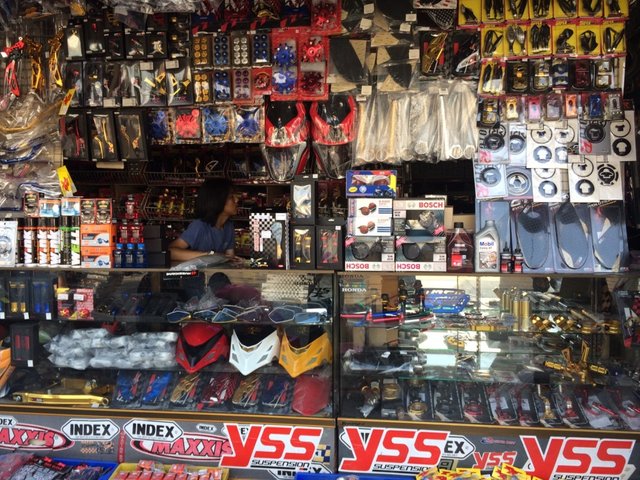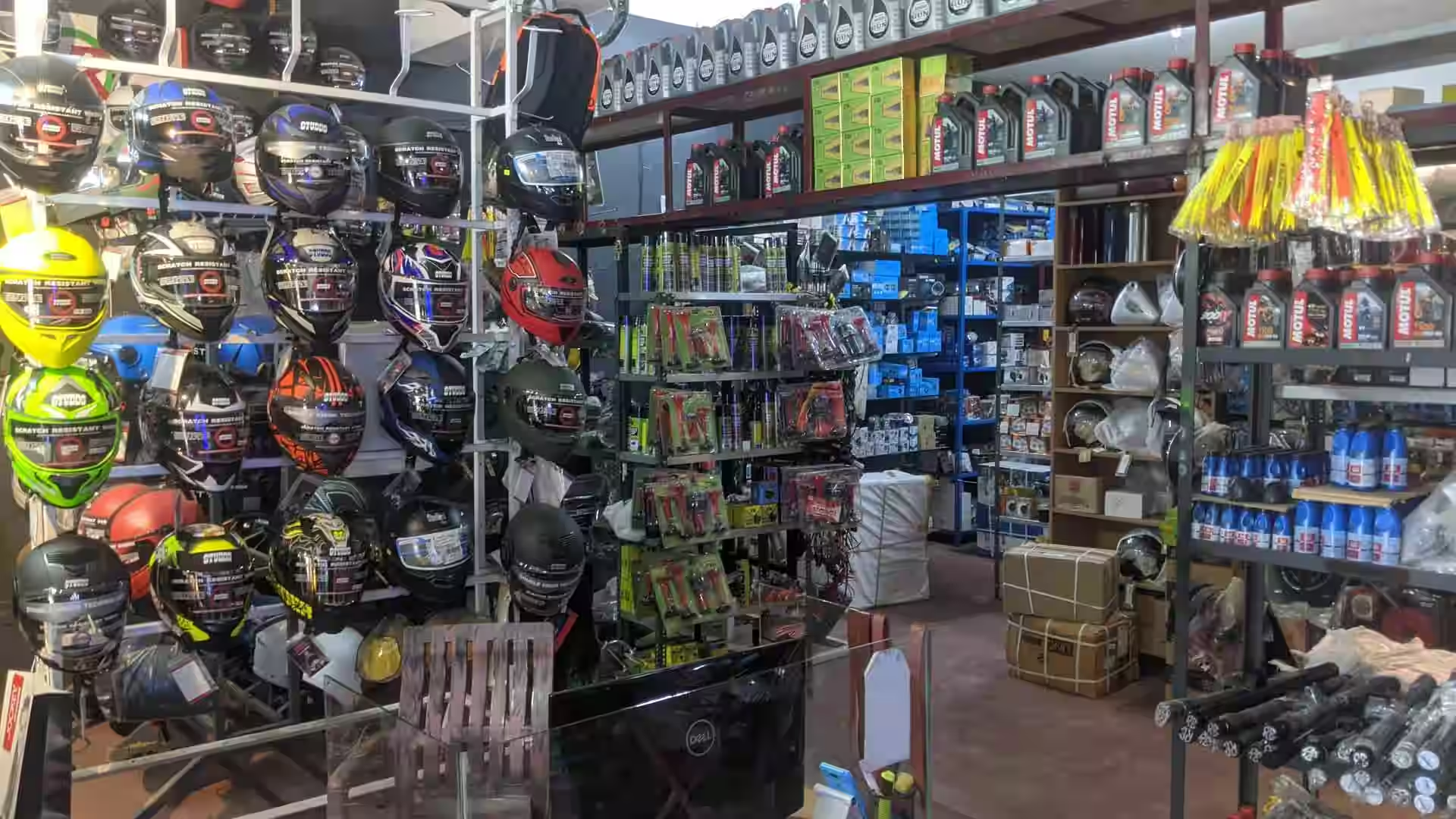Recognizing the Crucial Parts of a Bike: A Comprehensive Overview for Lovers
For motorbike lovers wanting to raise their riding experience and ensure their bikes run smoothly, comprehending the crucial elements of a motorcycle is critical. Each element, from the engine's intricate workings to the essential role of the stopping mechanisms, not only influences efficiency however additionally safety and security and comfort. This overview will stroll via the essential components that every cyclist should know with, enabling educated selections in both maintenance and potential upgrades. As we begin this expedition, one must ask: just how does each part engage to create the smooth experience every fanatic looks for?
Engine Elements

The camshaft plays an essential function in regulating the timing of the engine's valves, making sure the specific opening and closing essential for efficient gas and air consumption, as well as exhaust expulsion. This timing is important to keeping optimal engine efficiency and efficiency. Additionally, the carburetor or fuel injection system, depending upon the bike model, is accountable for mixing air with fuel in the right ratio for combustion.
The cooling system, either air or liquid-based, works to maintain the engine's temperature level within functional limitations, preventing getting too hot and making certain long life - motocross parts nz. Each element, meticulously developed and incorporated, adds to the smooth procedure of the engine, defining the bike's power outcome and total performance
Transmission System
Indispensable to the motorcycle's functionality, the transmission system ensures reliable power transfer from the engine to the wheels. This system makes up a number of essential elements, consisting of the clutch, transmission, and last drive, each playing an essential duty in translating the engine's power into activity. The clutch, normally operated by a hand bar, offers to engage and disengage the engine from the transmission, enabling smooth equipment modifications and regulated velocity.
The gearbox, usually described as the transmission proper, has a collection of equipments that motorcyclists can manually change with to readjust the bike's speed and torque output. These equipments are prepared in a sequence that allows the bike to speed up smoothly and maintain ideal engine performance across various rates. The majority of motorbikes make use of a consecutive gearbox, needing the rider to shift equipments in a predetermined order.
Braking Systems
While recognizing the transmission system is key to using a motorcycle's power, similarly vital is the capacity to regulate and quit that power effectively, which is where stopping mechanisms enter play. Brakes are vital for safety and security and performance, supplying the rider with the necessary control to navigate numerous surfaces and conditions. Usually, bikes include 2 kinds of braking systems: disc brakes and drum brakes.
Disc brakes are a lot more widespread in modern-day motorcycles because of their remarkable efficiency. They include a brake disc, caliper, and pads. When triggered, the caliper presses the brake pads versus the spinning disc, converting kinetic energy right into heat, thereby slowing down the wheel. This system uses far better heat dissipation, consistent performance, and enhanced quiting power, especially in damp problems.
On the other hand, drum brakes, though much less common, are still discovered in some bikes. They work by pushing brake shoes versus the inner surface of a drum affixed to the wheel. While usually much less reliable in warm dissipation and stopping power, drum brakes are easier and much more economical.
Understanding these braking systems' subtleties allows bikers to maintain their motorcycles correctly and appreciate the design that makes sure safe and efficient stopping.
Suspension and Guiding
Suspension and steering systems are important components that substantially affect a motorcycle's handling and experience comfort. The shock absorber, being composed of forks at the front and shock absorbers at the back, soaks up road abnormalities, enhancing stability and control. Front forks, generally telescopic or upside down, compress and rebound to reduce influences, while back shock absorbers keep tire contact with the roadway, vital for grip and safety and security.
Steering, centered around the handlebars, attaches the rider motorcycle apparel to the motorcycle's directional control. The steering head bearings make certain smooth operation, permitting precise maneuverability. Appropriate placement and maintenance of these bearings are important for predictable guiding response and reducing cyclist exhaustion.
The suspension's adjustability is one more vital facet; preload, damping, and rebound settings allow customization to suit different riding conditions and styles. This adaptability is necessary for enhancing performance, whether navigating city streets or tackling rugged routes. Developments like electronic suspension systems use real-time changes, boosting ride quality across diverse terrains.

Electrical Solutions
After guaranteeing a controlled and smooth ride with reliable suspension and steering systems, interest transforms to the electric systems, a critical facet of contemporary bikes. These systems play a vital function not only in beginning the engine however also in powering different components that enhance the capability and safety and security of the motorcycle.
At the heart of a motorbike's electric system is the battery, which shops electric energy needed for starting the engine and powering auxiliary systems - mx parts nz. The alternator or generator, combined with the rectifier-regulator, makes sure the battery continues to be billed while the motorbike functions, transforming power right into electrical energy and keeping voltage degrees
The ignition system, another important part, is accountable for igniting the air-fuel combination in the engine's cylinders. Modern motorbikes frequently use an electronic ignition system, providing better performance and reliability contrasted to conventional systems.
Lighting systems, consisting of fronts lights, tail lights, and indications, are additionally vital, making certain presence and safety for the rider. Extra digital elements such as sensing units, control devices, and shows add to innovative functions like gas injection management, anti-lock braking systems (ABDOMINAL MUSCLE), and electronic dashboards, additionally improving the riding experience.
Conclusion
An extensive understanding of a motorbike's important elements, consisting of the engine, transmission system, stopping devices, suspension, steering, and electric systems, is essential for lovers intending to enhance comfort, security, and efficiency. Proficiency of these components permits educated decisions relating to upkeep and upgrades, ultimately improving the riding experience. By visite site incorporating this knowledge, cyclists can ensure their bikes run at peak performance and integrity, therefore making the most of both satisfaction and longevity of their lorries.
For motorbike lovers looking to raise their riding experience and ensure their bikes run efficiently, comprehending the important parts of a bike is critical.Important to the motorbike's capability, the transmission system ensures reliable power transfer from the engine to the wheels.While understanding the transmission system is vital to using a bike's power, just as essential is the capability to regulate and quit that power efficiently, which is where stopping systems come into play. Commonly, motorbikes feature 2 types of braking systems: disc brakes and drum brakes.
A thorough comprehension of dirt bike riding gear a motorcycle's crucial elements, including the engine, transmission system, braking devices, suspension, guiding, and electrical systems, is crucial for fanatics intending to optimize performance, comfort, and security.